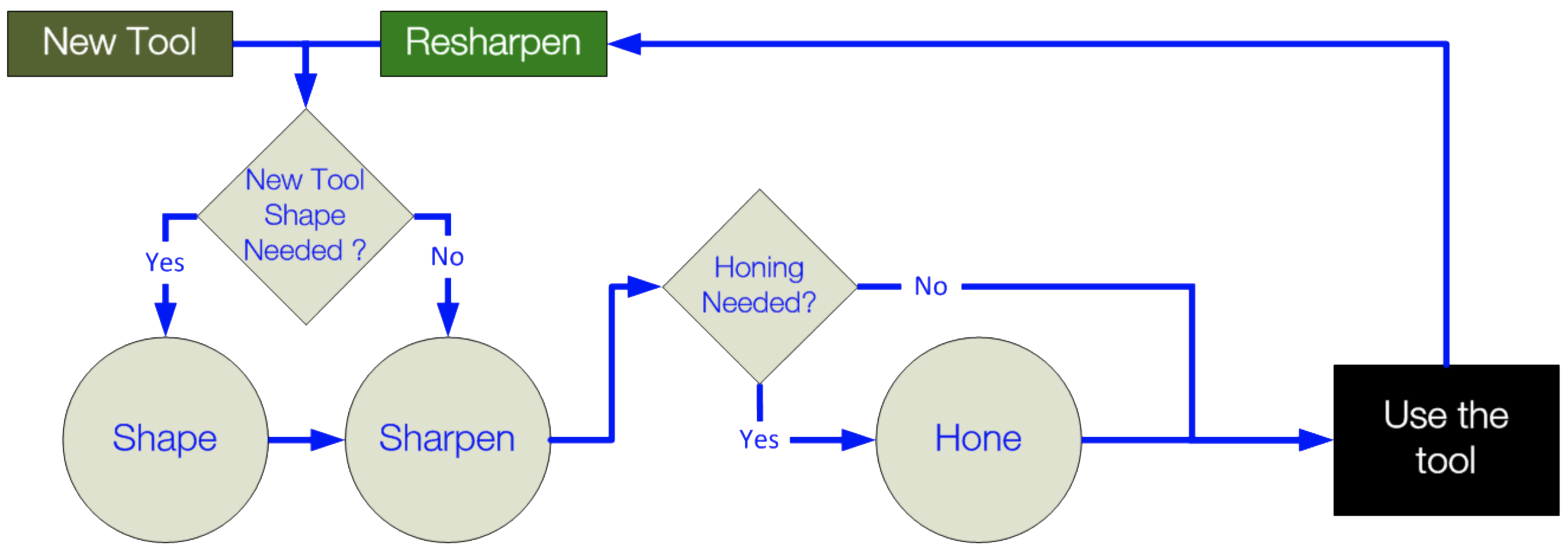

|
|
General Information on Sharpening
|

|
Typical Grinding Media Used
Shaping the ToolDrill bits are typically not reshaped. The general guidelines for a shape work well in many situations, and are probably fit for the average user.However, there are plenty of studies (e.g., Drill Bit Geometry, by Joseph Mazoff) linking the geometry of the drill bit's cutting edge to the power needed to perform the drilling operation. When more power is needed, two things happen :
It may make sense for the user get a separate set of drill bits for commonly used processes (e.g., a set for steel, one for aluminium, one for wood, etc.). |
|
Typical Grinding Media Used
Sharpening the ToolAll the drill bits to be used for a job should be sharpened at the start of the job for which they will be used, and as often as necessary (which is more often than most people resharpen them). This includes not only the one used for the final hole size, but all the ones leading up to that.Resharpening during the middle of a job may make sense as it will make the job go better, and potentially yield a better result. This is particularly true if the piece is to be reamed as a nicely drilled hole will be easier to ream. The benefits of a 4-facet grind over a 2-facet grind are well outlined in Drill Bit Geometry, by Joseph Mazoff. This is highly recommended if your sharpener can accommodate it. |
|
Typical Grinding Media Used
Honing the ToolMany users of drills do not hone their drill bits.My experience has been that using an un-honed drill bit which will work adequately when performing rough work; however honing is recommended when drilling softer metals, hard woods (e.g., ebony), and especially burls in hard woods. Note: When honing or stropping, the side to start on is the one where the grinding was last done. |